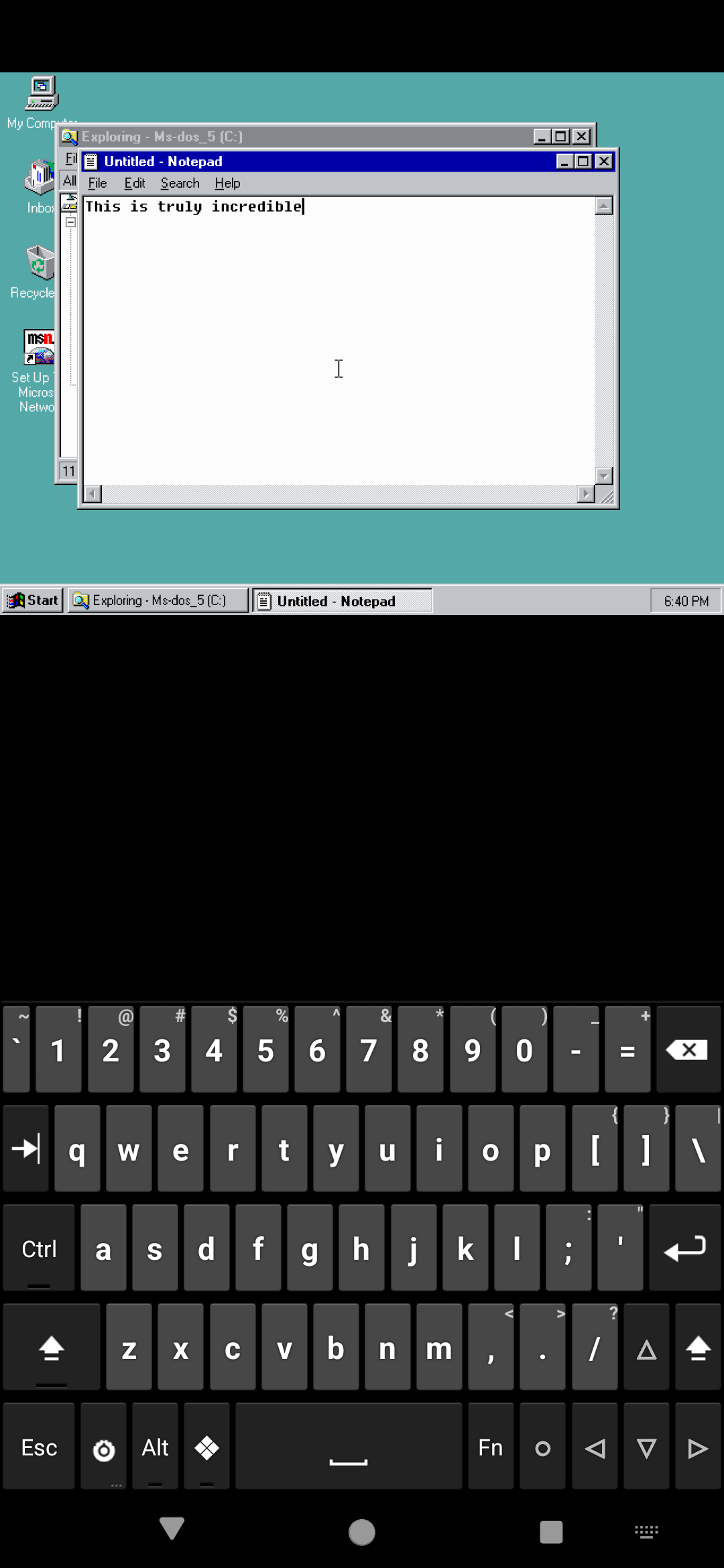Comrades I challenge you to find the stupidest, most convoluted way to run a Windows app !
The rules are :
- You start with Windows and end with a Windows app
- All steps must be different, so no using 4 different VM software
Here is my entry, with a score of 9 beautifully stupid steps :
- Windows > WSL > WSL Wayland compatibility layer > Linux Wayland session > XWayland > QEMU > macOS > Wine > Windows app !
Can anyone do better ? I’m sure whoever get the highest score will gain eternal fame !
I don’t remember the exact process but I ran Linux on computer A and windows on computer B. I installed windows onto a second drive on computer B and set Virtual box on computer A to use that drive as its boot drive over the network. I then shared the primary drive as well so I could boot computer B into either Windows install and run the other as a VM on Computer A.
I have no idea why I did this but it worked and no one was impressed.
“Because I can” is a perfectly viable reason. Messing around and doing ridiculous things is one of the best ways to learn.
I’m definitely impressed !
Fewer steps than yours, but I’ll claim this as a win in the “purity” field where you have to stop at the first layer where you can run a Windows app.
Linux on a RISC-V device -> container -> qemu-user + binfmt -> x86 VM software -> FreeBSD -> Linux binary compatibility -> Wine -> Windows app
Did you actually get that to run or is this a fun thought exercise? It seems like a lot of nested virtualization. If you’re clever enough maybe you could get Windows > WSL > WSL Wayland compatibility layer > Ubuntu Wayland session > LXC > Fedora > QEMU > macOS > Wine > Windows app
I really want to try it because I can’t resist stupid projects, but I’m stuck on a crappy old Thinkpad for now, and it probably would die at step 1 install Windows 11 😅 So it’s only theoretical for now, but I hope to try it whenever I get a new PC !
I needed to make a docker image based on Core OS (RedHat) and the docker host had to be RHEL compatible. My machine is Ubuntu. To get it to work, I installed Rocky Linux on LXC and docker inside that machine. Turns out there are a lot of security settings isolating LXC and restricting nested virtualization, but fortunately Canonical posts a 20 minute video explaining how to modify the permissions for that use case. I cannot imagine virtualizing much further without the machine refusing to comply!
I would recommend using multiple versions of windows, and maybe running it all in a VM in a web browser on Android,

Install Windows. Run the app.

